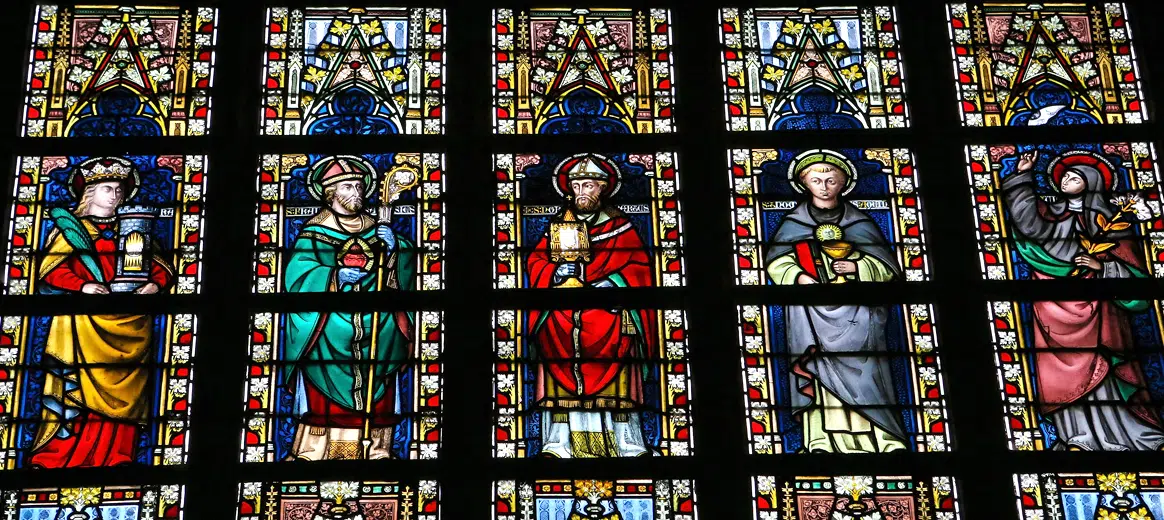St. Rocco
Feast Day: Aug. 16
St. Rocco’s story dates from the time when the Black Death first ravaged Europe. The epidemic arrived in October 1347 when a ship full of sick and dying sailors docked in Messina, Italy. Physicians were mystified by the sailors’ symptoms: They sweated profusely, coughed up blood and had large black swellings in their armpits and groins. All the sailors died, and then the mysterious illness passed to the townspeople. From Messina the plague spread to every part of Europe – even to remote Iceland and Greenland – taking the lives of 20 million people within four years. For the next three centuries Europe would be afflicted by periodic outbreaks of bubonic plague.
Rocco was born into an aristocratic family in Montpelier, France. Before he reached his 20th birthday his father and mother both died, leaving him a large inheritance. He left his estate under the management of his uncle and set off on foot on a pilgrimage to Rome.
It appears that Rocco stayed in Rome for at least two years. About the year 1373 he began walking home. When he reached Piacenza, he discovered that plague had just broken out in the city; those inhabitants who were not dying of the epidemic were in a state of panic. Moved by the suffering of the sick and the dying, Rocco went to one of the city’s hospitals where he volunteered as a nurse. It is said that he cured hundreds of plague victims by making the sign of the cross on their feverish foreheads.
One morning Rocco woke up very ill. In his armpits and groin he found the tell-tale black swellings of the Black Death. Rather than infect anyone else he dragged himself outside the city and into the woods where he could die alone. Rocco had just made himself a bed of leaves when a dog trotted up to him with a large loaf of bread in its mouth. Every day the dog returned with a fresh loaf. Incredibly, Rocco recovered. He went back to Piacenza and took up his work in the hospital again.
Thanks to the dog that kept Rocco from starving, all dogs have St. Rocco as their patron. The dog with the loaf of bread in its mouth has become St. Rocco’s emblem, appearing beside him in virtually every picture or statue of the saint.
Years of living outdoors and his bout of the plague must have altered Rocco’s appearance because when he arrived home in Montpelier his uncle did not recognize him. He was arrested as a spy and imprisoned; five years later Rocco died in his cell. When his body was being washed for burial the undertakers found a distinctive cross-shaped birthmark on Rocco’s chest. Rocco’s uncle realized that the “spy” had been his nephew after all. To make amends for the wrong they had done to him, the city officials of Montpelier gave Rocco an elaborate state funeral. It was reported that countless numbers of the sick and the infirm were healed after touching Rocco’s coffin.



Pentecost Sunday